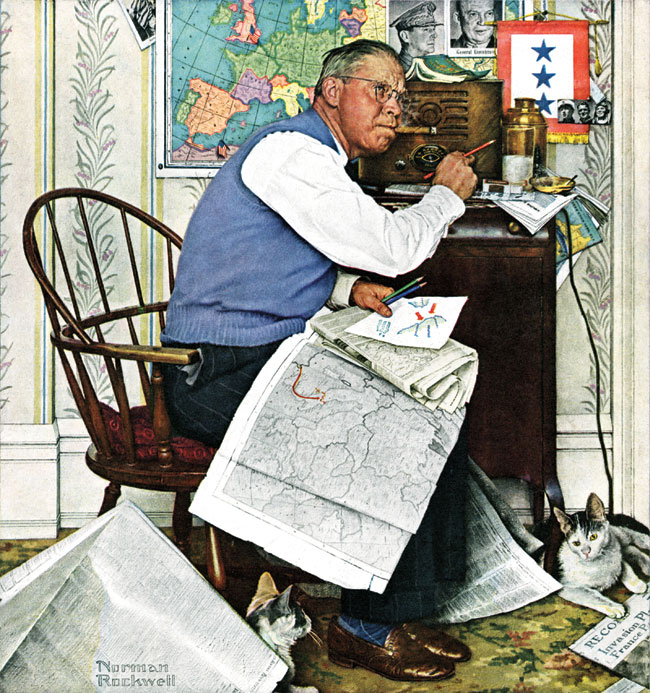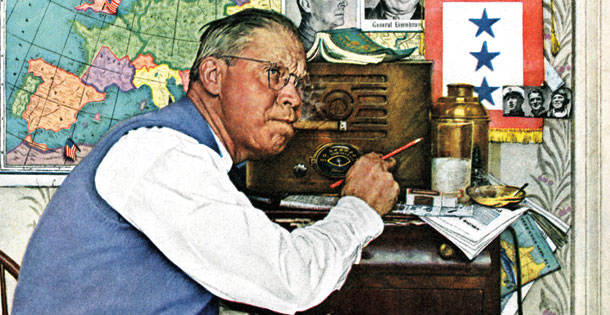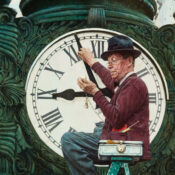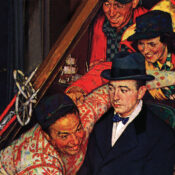
Rockwell’s Armchair General is a reliable reflection of the way many parents of World War II soldiers spent their evenings — waiting for the latest reports to know the fates of their sons.
The April 29, 1944, Post cover shows a worried patriarch who tunes in to the radio to chart war maneuvers. More important, he’s attempting to deduce his three sons’ whereabouts and safety.
Rockwell’s careful deployment of mapping and research props gives the illustration a sense of narrative history. It’s clear this activity occurred nightly. Well-penciled maps flag the sons’ positions next to their military portraits. In homes across the country, parental war anxiety was the norm.
Rockwell’s composition is both heartwarming and sad. The patriotic dad is surrounded by a flurry of homemade research and comforted by a pair of cats. He’s doing all he can to stay current, yet he is essentially powerless. Each night, the reports coming through the airwaves could signal allied advances, but also crushing personal loss.
The armchair general turns knobs and tunes out static as if he could bark commanding orders through his radio. But, of course, there’s nothing he can do but passively await the news.
Become a Saturday Evening Post member and enjoy unlimited access. Subscribe now




Comments
There is another aspect to this piece that is especially moving.
The presence of a funerary urn placed close by the photos of three sons, together with the use of negative space to show the absence of their mother — who would surely be standing alongside listening as well — indicates that the man is a widower. His passion for knowing of the whereabouts and welfare of his sons is all the more poignant considering that they are all the family he has left in the world. His placement of their mother’s ashes shows that she, too, is watching over them as much as he is.
It’s one of my favorite works by this amazingly talented artist, a visual storyteller of the first magnitude.